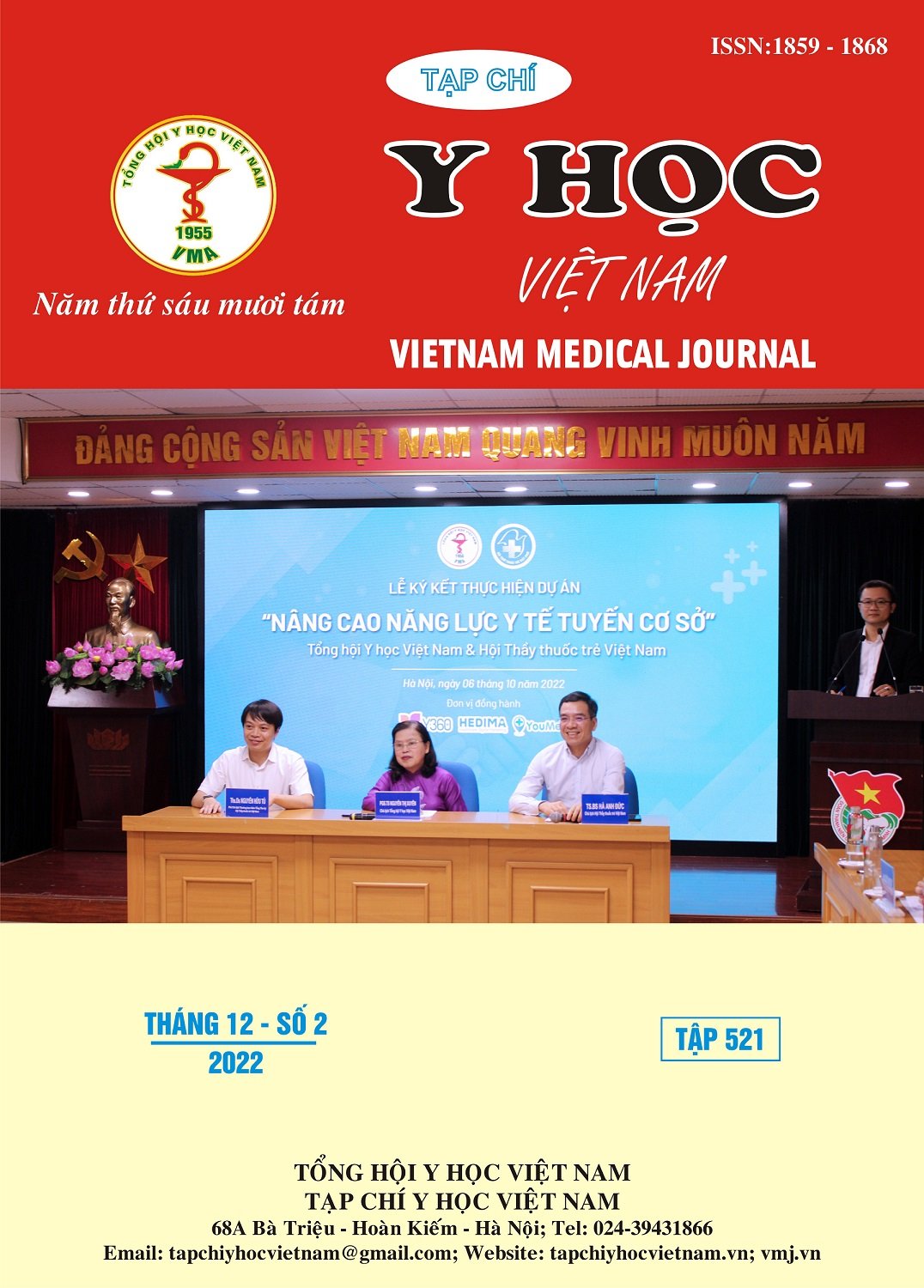SOME PROGNOSTIC FACTORS OF NEUROMYELITIS OPTICA SPECTRUM DISORDERS (NMOSD)
Main Article Content
Abstract
Objective: Analyze some prognostic factors of neuromyelitis optica spectrum disorders (NMOSD). Subjects: We selected 38 patients were diagnosed with neuromyelitis optica with positive Anti-Aquaporin 4 antibody between January 2020 and June 2022 at the Neurology Center of Bach Mai Hospital. Methods: Cross-sectional descriptive study. Results: Study on 38 patients diagnosed with NMOSD with positive Anti-Aquaporin 4 antibody, mainly female patients with 31 (approximately 81.6%) with a male/female ratio of 1:4.28 and age group. Most patient are middle-aged (30-49 years old, accounting for 52.6%) and the average age is 41.9 ± 13.8 years old. The most common symptoms were pyramidal symptoms (motor paralysis) and sensory disturbances accounting for the majority of patients 89.5% and 86.5%, followed by optic nerve symptoms with 21.1% and brainstem symptoms with 18.4%. It has not been found that gender is a factor that can help predict disability with EDSS score between the two sexes not statistically significant at both the time of admission and discharge with p=0.141 and 0.433. The symptoms of motor paralysis could predict a higher degree of disability in patients with a statistically significant increase in EDSS score between the quadriplegic group and the paraplegic group as well as between the paraplegic and non-paraplegic group. both survey times with p=0.007 and 0.015, p=0.013 and 0.011. Patient age has a mean positive linear correlation with EDSS score at both the time of admission and discharge with correlation coefficients r=0.401 and 0.338, respectively, with p=0.013 and 0.038, 95% confidence. The group of patients Independent of support (EDSS < 6) had a statistically significant lower age than and Patients Dependent of Support (EDSS ≥ 6) with p=0.015. Conclusion: In summary, through the study Analysis of some prognostic factors of the spectrum of neuromyelitis optica, we found that the spectrum of neuromyelitis optica is a common autoimmune disease in women, the average age of age, with prominent symptoms of motor paralysis and symptoms of the optic nerve (blurred vision, pain,...). Gender is not a prognostic factor, the more severe the initial motor paralysis, the greater the extent of disability according to Kurtzke of the patient, similar to the age of the patient.
Article Details
Keywords
Neuromyelitis optica, neuromyelitis optica spectrum disorders, Aquaporin 4 antibodies
References
2. Wingerchuk DM. Neuromyelitis optica: effect of gender. J Neurol Sci. 2009;286(1-2):18-23. doi:10.1016/j.jns.2009.08.045
3. Wingerchuk DM, Banwell B, Bennett JL, et al. International consensus diagnostic criteria for neuromyelitis optica spectrum disorders. Neurology. 2015;85(2):177-189. doi:10.1212/ WNL.0000000000001729
4. Kurtzke JF. Rating neurologic impairment in multiple sclerosis: an expanded disability status scale (EDSS). Neurology. 1983;33(11):1444-1452. doi:10.1212/wnl.33.11.1444
5. Papp V, Magyari M, Aktas O, et al. Worldwide Incidence and Prevalence of Neuromyelitis Optica: A Systematic Review. Neurology. 2021;96(2):59-77. doi:10.1212/WNL.0000000000011153
6. Li Z, Yuan M, Zhang C, Gu H, Wang Y, Shi FD. Incidence of neuromyelitis optica spectrum disorder (NMOSD) in China: A national population-based study. Lancet Reg Health - West Pac. 2020; 2:100021. doi:10.1016/j.lanwpc.2020.100021
7. Pandit L, Asgari N, Apiwattanakul M, et al. Demographic and clinical features of neuromyelitis optica: A review. Mult Scler Houndmills Basingstoke Engl. 2015;21(7):845-853. doi: 10.1177/1352458515572406
8. Kunchok A, Malpas C, Nytrova P, et al. Clinical and therapeutic predictors of disease outcomes in AQP4-IgG+ neuromyelitis optica spectrum disorder. Mult Scler Relat Disord. 2020; 38:101868. doi:10.1016/j.msard.2019.101868


